Drain backfilling at Yundi Nature Conservancy as hydrological restoration continues
Regular readers will recall, from a previous blog, a project at Yundi Nature Conservancy, where NGT is helping landholder and conservationist John Fargher restore an area of the critically endangered Fleurieu Peninsula Swamp ecological community. The property includes some intact areas of Fleurieu Peninsula Swamp, with the rich plant diversity typical of this community, but also a degraded area affected by the past excavation of a drain through the bed of the swamp and subsequent invasion by common reed (Phragmites australis), which has formed a dense monoculture.
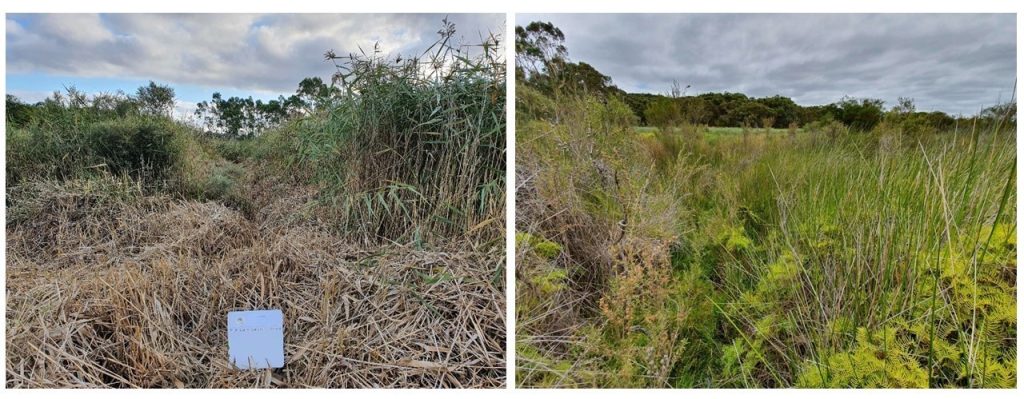
Restoration to date has involved burning, mulching, slashing and spraying of Phragmites, led by John, with the help of volunteers including long-term NGT volunteer Andy Lines.
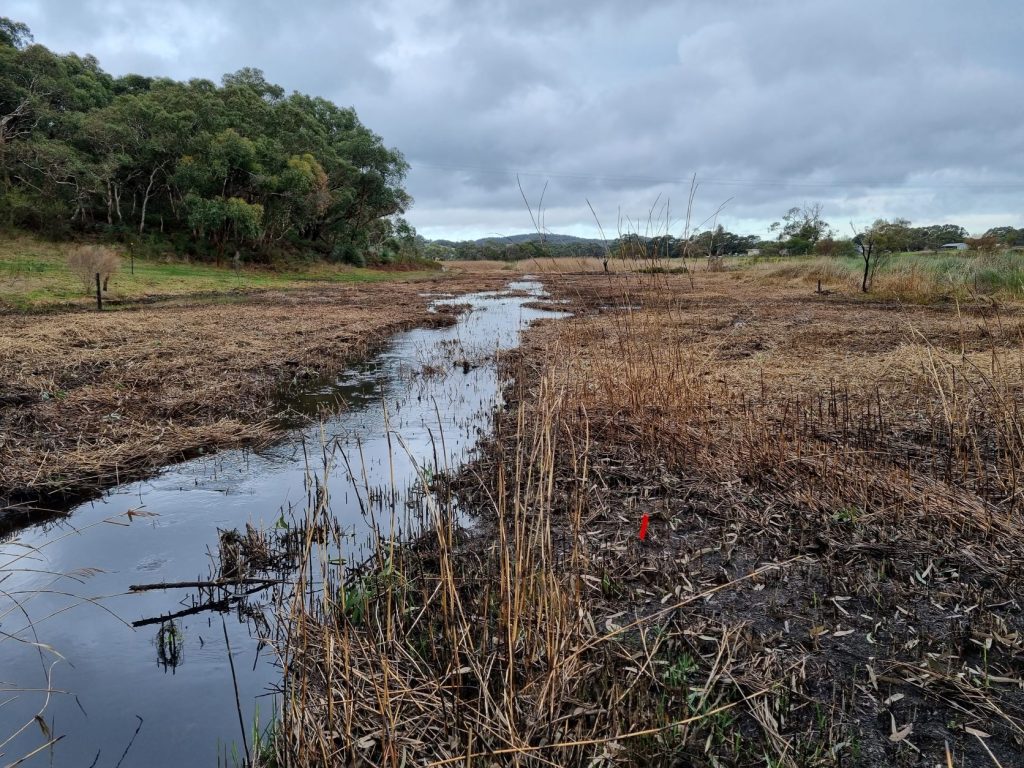
Finally, after several delays caused by the wet spring of 2021 and summer rain in January 2022, drain backfilling works were undertaken on Valentines Day 2022. First, an excavator cut a narrow trench through the drain, perpendicular to the direction of flow, to house a sandbag armoring weir and key it in below the drain bed and into the drain banks.
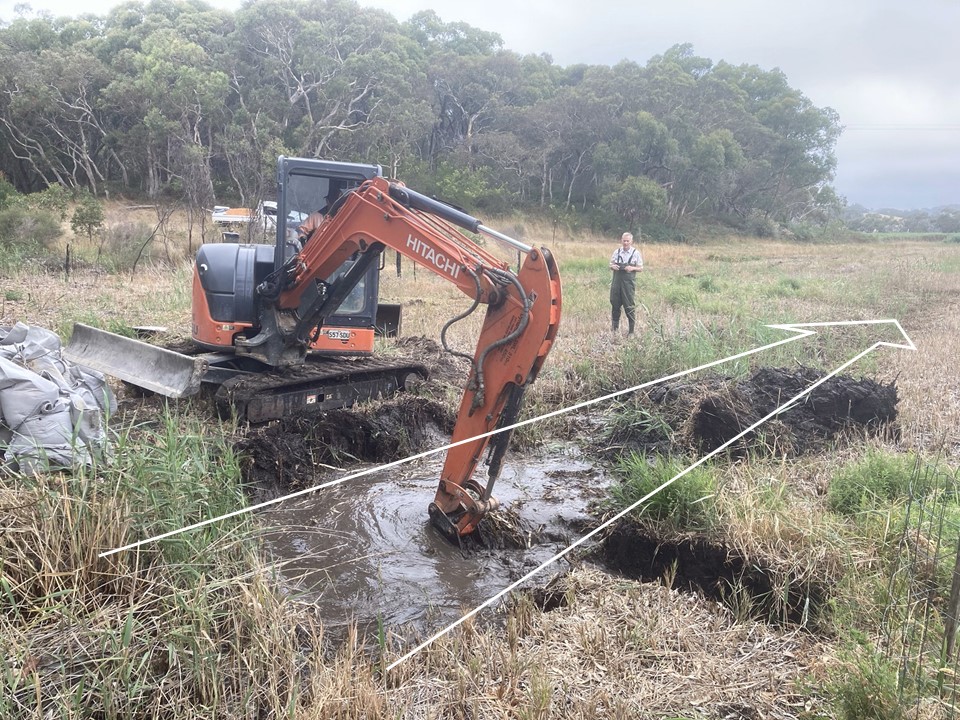
Next, the sandbag armoring weir was built. This used about 4.5 tonnes of sand and about 100 sandbags. Spoil, excavated from the drain decades ago, was placed back into the drain downstream of the armoring weir.
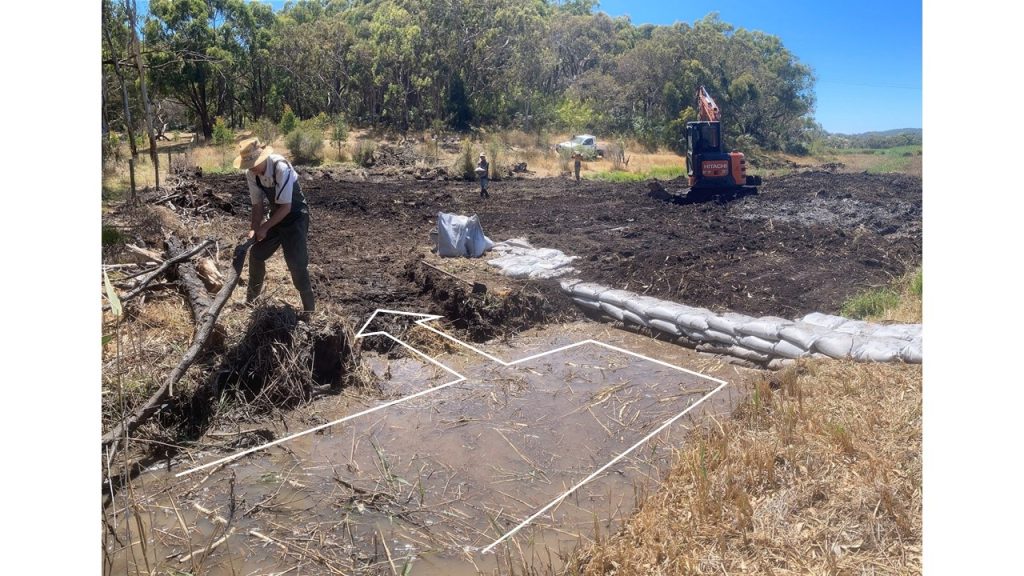
One week after construction, water levels in the vicinity of the structure had risen by 30 cm. This is very encouraging – clearly the structure and drain backfilling behind is holding up groundwater fed inflows and rewetting the the surrounding peat. This is the intention of hydrological restoration at the site and will help ensure this swamp retains moisture through future dry periods. Ongoing management of Phragmites will be required for the next few years but the underlying hydrology has now been significantly improved and the wetter peat at the surface should favour a diverse array of Fleurieu Peninsula Swamp species. Early signs of regeneration following Phragmites control are encouraging and will be supported by revegetation to be undertaken by John and volunteers. We are looking forward to returning to Yundi over the coming months and years to monitor progress.
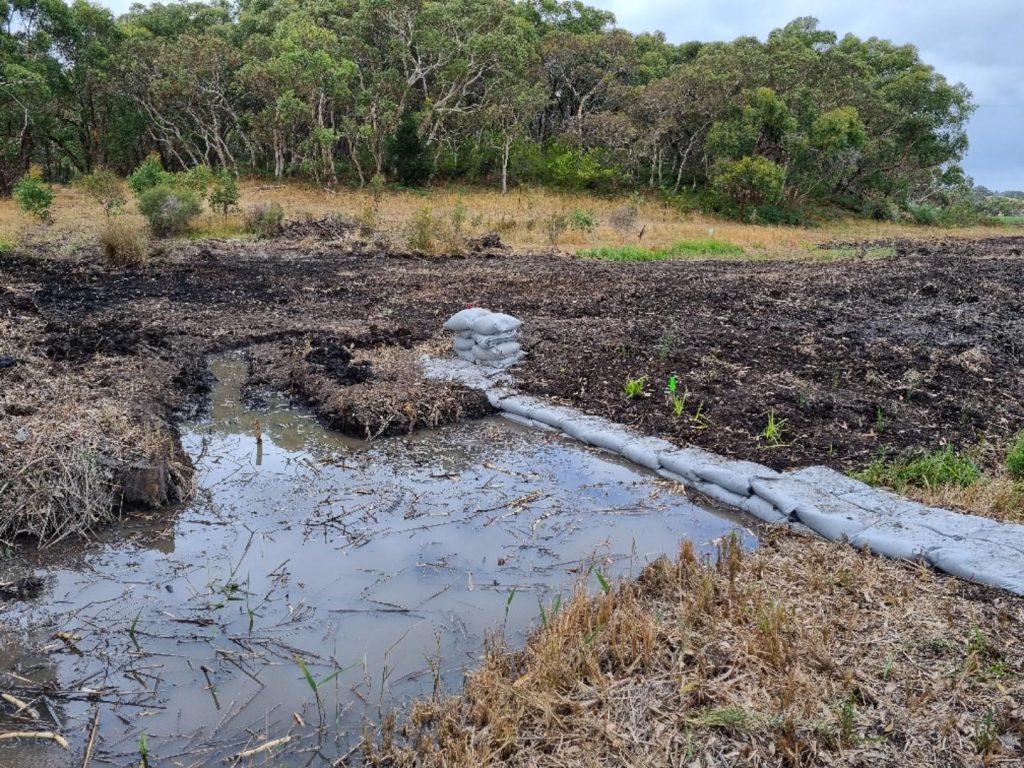
This project is supported by the Revitalising Private Conservation in SA program, funded by the South Australian Government.
